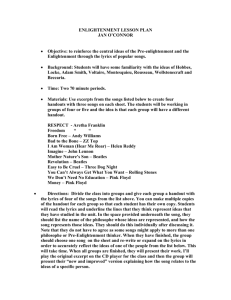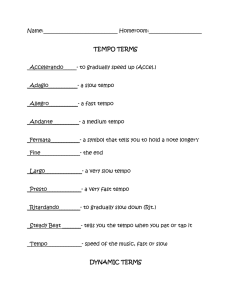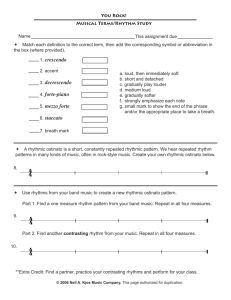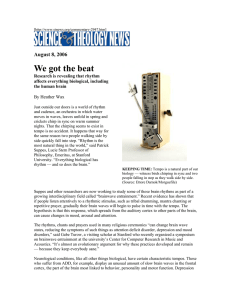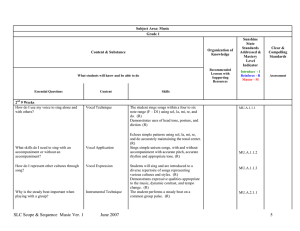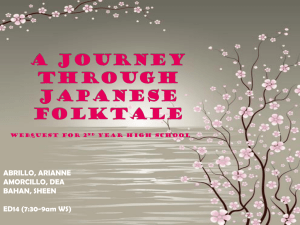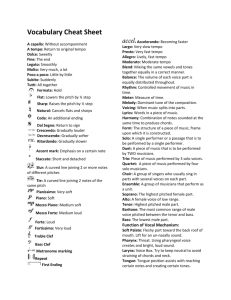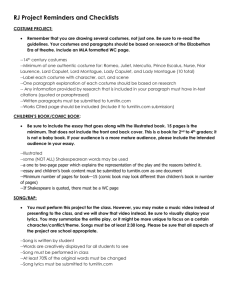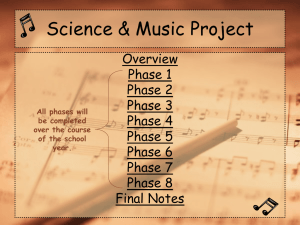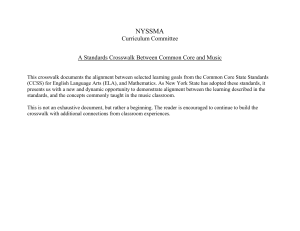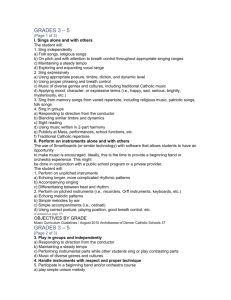Messages of Freedom, Hope and Life
advertisement
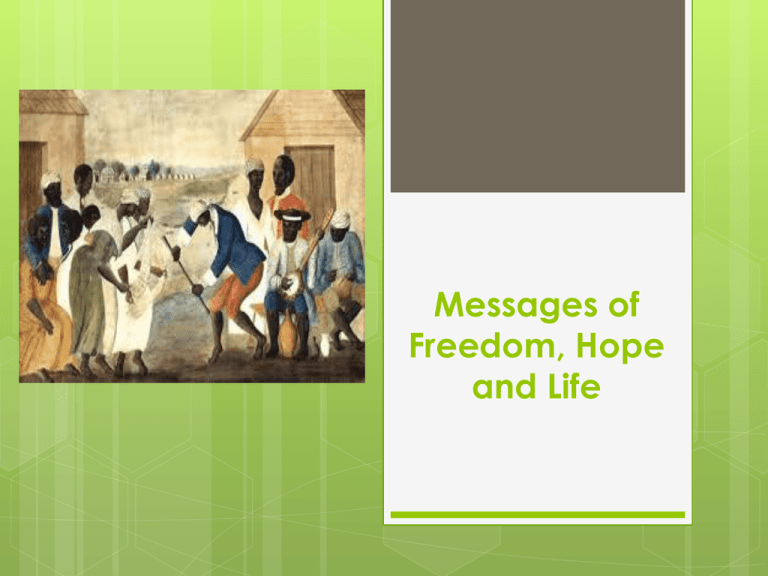
Messages of Freedom, Hope and Life Where slaves came from in Africa: Cameroon Guinea Congo Ivory Nigeria Coast Senegal Togo Traditions slaves brought from Africa: Stories and Storytelling Language Customs Dancing Music Group singing Spirituals Deeply emotional with lyrics that often used code words about freedom, and a desire to escape slavery Sung by enslaved African-American people in the United States Originated in the United States between 1740 and 1900 Use oral tradition – Songs are passed by word of mouth Spirituals developed… As people sang as they worked As people celebrated events When people made them up on the spot or used a familiar tune with different lyrics As people draw from African song and dance As a way to communicate coded messages Messages Explain slavery Give life the hardship of hope for a better Express Draw religious faith from religious and biblical texts Types of Spirituals Call and response – a ‘leader’ begins a line, which is then followed by a choral response; often to a fast, rhythmic tempo Examples: Good News, Swing Low, Sweet Chariot, Go Down Moses Slow and melodic - Songs with sustained, expressive phrasing, generally slower tempo Examples: Deep River, Balm in Gilead, Calvary Fast and rhythmic – Songs that often tell a story in a faster, syncopated rhythm Examples: Witness, Ev’ry Time I Feel the Spirit, Elijah Rock, Joshua Fit the Battle of Jericho Performance Tips Phrasing: breathing is allowed in the middle of phrases when placing emphasis on important key words Lyrics: words often are shortened and consonants soften or left out all together Improvisation: permitted especially by soloists Repetition: give more meaning to lines and individual words and make all repetitions sound different Dynamics and Rhythm Use the entire dynamic range from very soft to the to very loud Explore shading and degrees within soft and loud and a balance between parts Syncopated rhythms can be improvised Movement and Expression Rhythmic Movements: clapping and stomping add to the performance Interpretive Movements: based on words in the song such as bending, leaning, swaying to bring animation to the song Facial Expressions: important in order to convey meaning to the listener Calls and Shouts: welcomed in spirited fast tempo spirituals
